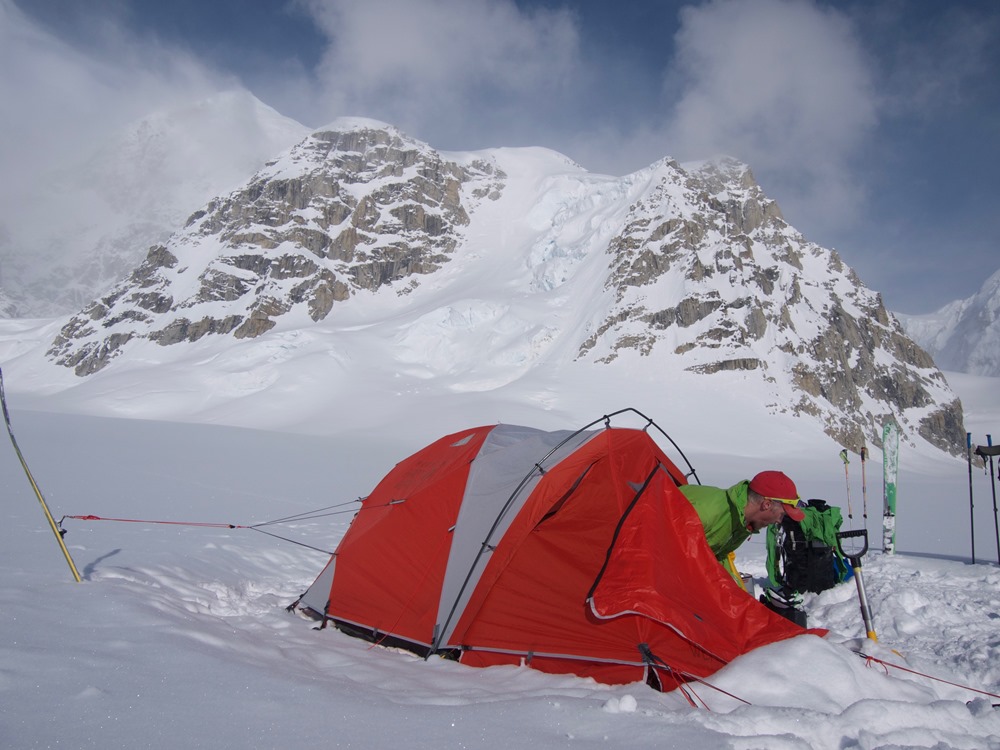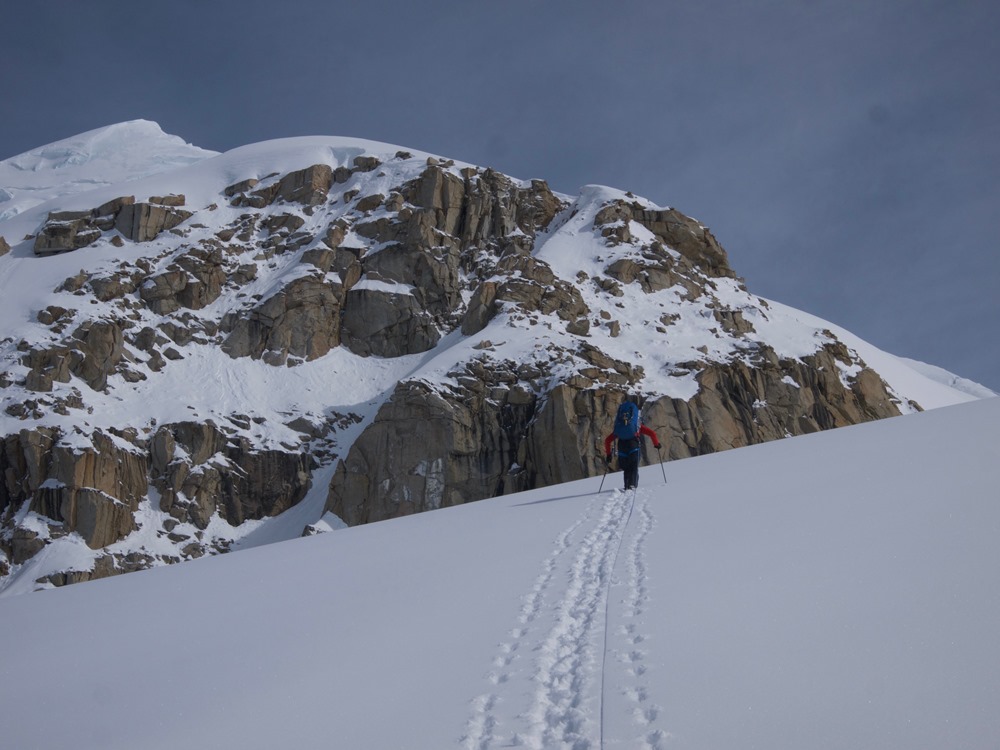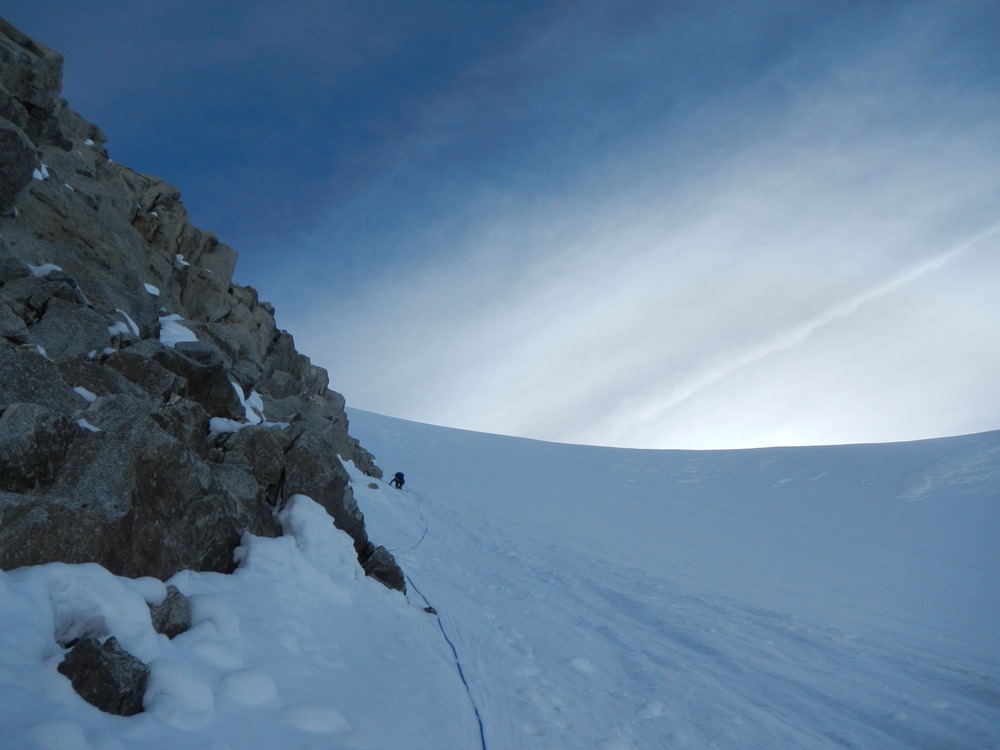
On April 26, Tucker and I flew to the glacier and completed helicopter short-haul training evolutions before beginning our climbing patrol. We scouted the access couloir on the west face of West Kahiltna Peak that evening. We made the decision not to ascend on the 27th due to diminished visibility and high winds on the ridge above. Instead, we traveled to 7,800-foot camp on Denali's West Buttress route to check in on the climbers beginning their ascent. We contacted three climbing expeditions and attempted to find a suitable crevasse for human waste disposal. Currently there is not a good option at the 7,800-foot camp for this purpose.
With a favorable weather forecast for the following two days, we climbed from our base camp at approximately 7,300 feet to our high camp on West Kahiltna Peak at 10,500 feet on April 28.

(Above) Approaching the access couloir on West Kahiltna Peak (NPS Photo/T.Chenoweth)

(Above) Nearing the top of the access couloir (NPS Photo/D.Weber)
We had a great day of climbing to our high camp. A combination of snow, rock and ice protection was available to reach the top of the access couloir. A large basin separated us from our eventual camp. Soon after arrival at our high camp, the weather began to deteriorate with increasing clouds, wind and snowfall. After a stormy evening, continued snowfall in the morning and weather forecasted to be the same, we made the decision to descend to our base camp before snow accumulation prevented our safe retreat. The unexpected and variable weather and snowfall totals required constant reevaluation of our initial climbing plans. On the afternoon of April 29, Tucker and I descended back to the Kahiltna Glacier and encountered new snowfall totals of up to two feet from the previous night's storm. We flew back to Talkeetna on April 30 before an impending storm hit the Alaska Range.

(Above) Traversing toward our high camp across the basin (NPS Photo/T.Chenoweth)

(Above) High camp at 10,500 feet with Mount Crosson and Mount Foraker in the background (NPS Photo/T.Chenoweth)
In summary, the climbing opportunities in this area are plentiful, aesthetic and should be a more frequently visited objective. In clear weather with stable snow conditions, a competent party can complete this traverse in two to three days. An ascent of either East or West Kahiltna Peak or a traverse of the two is an excellent alternative to the, at times, crowded conditions in the range during the height of the climbing season.
